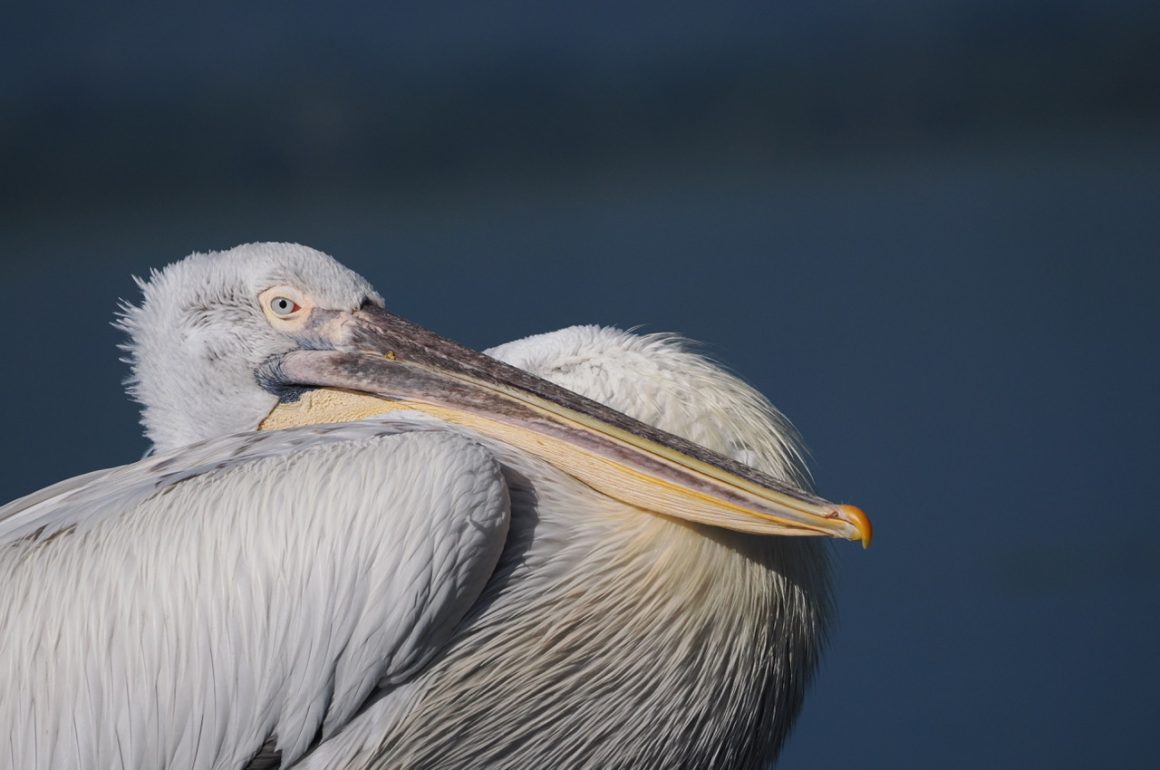
I normally write my contributions to 10000 Birds in my study at home. In contrast, this piece is being written on my iPad in the departure hall of Thessaloniki Airport, as I’m on my way home from a birding trip to northern Greece. Flying close to the terminal buildings are Pallid Swifts, a bird I’ve hardly seen here, as the population in this part of Greece is restricted to the coastal strip. Pallid Swifts are always a challenge to identify, but from where I’m watching is easy to see that they are browner than Common Swifts. Other features, such as their slightly broader wings, are not so easy to see.
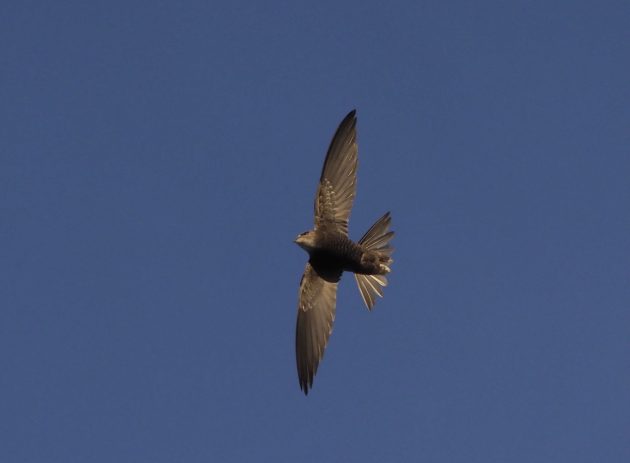
Pallid Swifts have slightly broader wings than Common Swifts, while the plumage is also browner
Pallid Swifts are just one of the 170 species I’ve enjoyed watching over the past nine days. The weather hasn’t been great (it’s been much warmer and drier at home in England), and it has rained nearly every day, but the birds have been rewarding throughout the trip. We (I had three travelling companions) started our holiday at Lake Kerkini, one of my favourite destinations in Europe, and one that I have visited almost annually since my first visit in 2008. There were no major surprises in what we found there, but a number of the more elusive species did give themselves up easily this time.
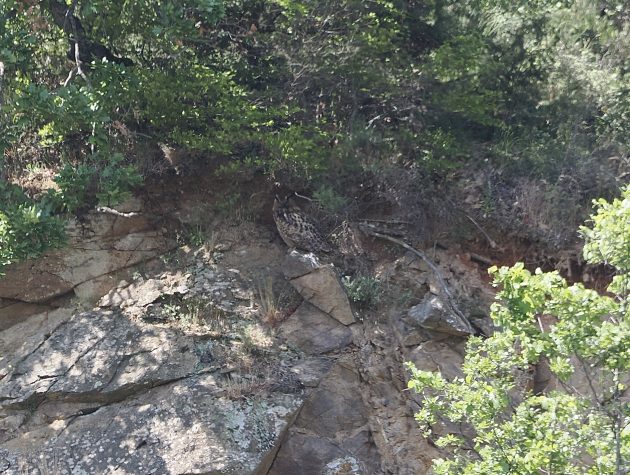
Spot the owl: there’s a female Eagle Owl somewhere in the picture
One of the most notable was a European Eagle Owl, the Old World equivalent of the American Great Horned Owl (the two were once considered to be the same species). This owl was a lifer for two of my companions, so a bird that we put some effort into finding. The bird we did eventually see was a female, roosting in a quarry close to her nest, which contained three well grown chicks. I’ve seen a several Eagle Owls in similar settings in a number of different European countries, from Spain to Hungary. Though always impressive, these are big, powerful owls they can be a little boring, as during the day they rarely do more than sit and occasionally revolve their heads.
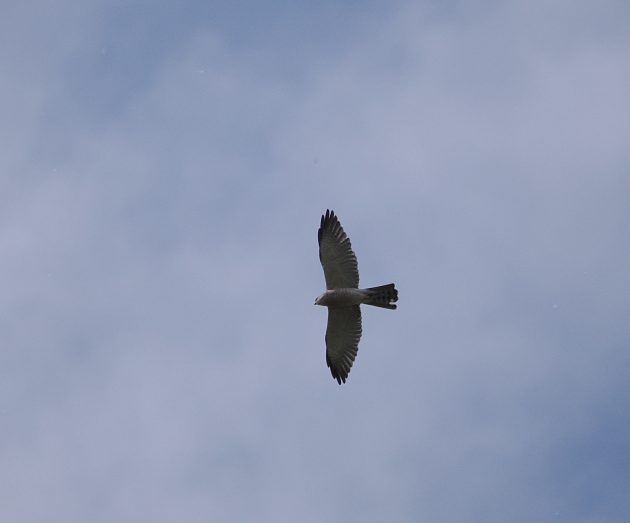
A male Levant Sparrowhawk – a Balkan special
Much more entertaining was a real Balkan special, the Levant Sparrowhawk, a small hawk that is restricted as a European breeding bird to this corner of Eastern Europe. Migrants from Africa, Levant Sparrowhawks only return from their wintering grounds in early May, so the birds we saw had only recent arrived. We did see some spectacular displays, one involving two females (noticeably larger than the males) and a single male. The male flew on what I would describe as elastic wings, with graceful, almost balletic, flaps and glides. Despite the name, Levant Sparrowhawks don’t prey in sparrows, and are not in the least bit similar to the European Sparrowhawk. They are much more like the Shikra of Africa and India, for their feed mainly on small reptiles such as lizards, doing much of their hunting from a stationary post, often a telephone wire. I’ve sometimes struggled to find these elegant little hawks, but not this time, as we saw them most days.
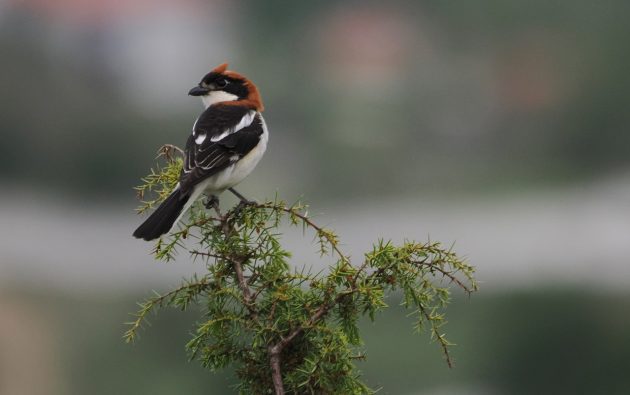
Male Woodchat Shrike
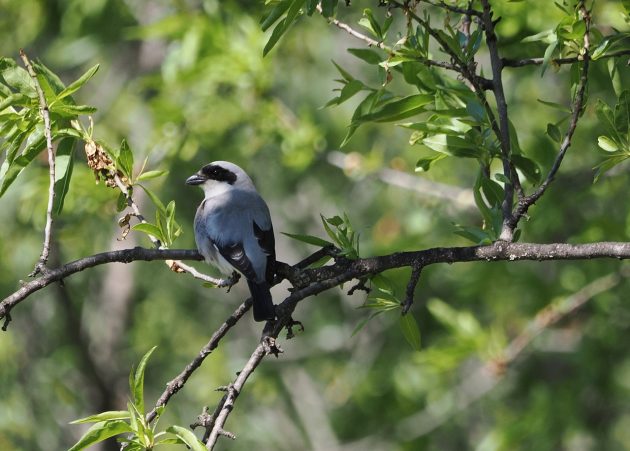
Lesser Grey Shrike
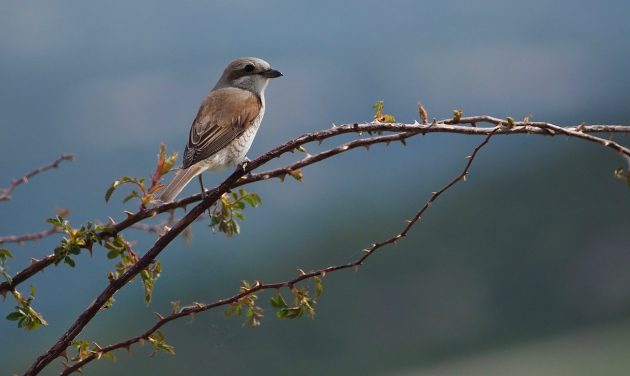
A female Red-backed Shrike – the commonest species of shrike in northern Greece
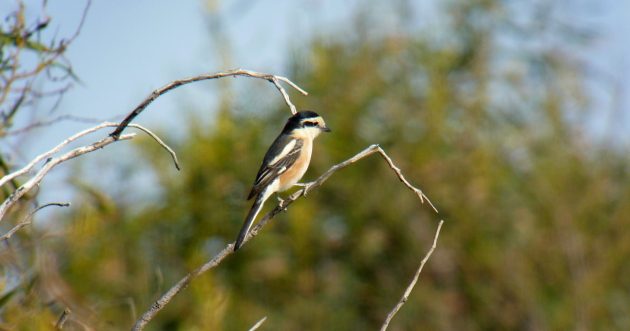
Masked Shrike: a species that is becoming more common in the area
This area of Greece is one of the few places in Europe where you can reasonably confident of finding four species of shrikes in a day – Lesser Grey, Red-backed, Woodchat and Masked. The latter is the smallest of the European shrikes, and is a dainty, attractive bird. Unlike the other shrikes, it’s more of a woodland species. Numbers are apparently increasing in Greece. Again, we had no problems in seeing them at a number of different sites. We did well with Lesser Greys, too, also finding them on the coast. They are birds that like warm areas, and they can often be found in the same places as Rollers. Though we enjoyed seeing a number of Rollers, they proved frustratingly difficult to photograph. My picture (below) was taken from the car window: the perch is typical, but unattractive.
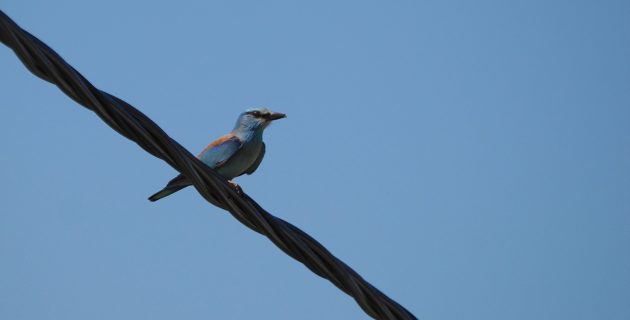
A Roller on a wire
Kerkini is a great place to see not only Rollers, but Europe’s other four most colourful birds – Kingfisher, Golden Oriole, Hoopoe and Bee-eaters. Bee-eaters were numerous, and we saw them almost everywhere, but we never tired of listening to their soft, far-carrying calls, or watching them hunting and courting. They are a bird that is always both a delight and a challenge to photograph: I’m always trying to take a better photograph than I’ve managed before.
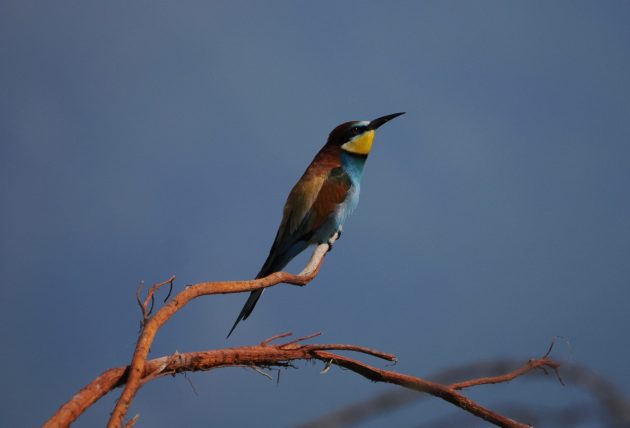
Bee-eater – always a delight to see and photograph
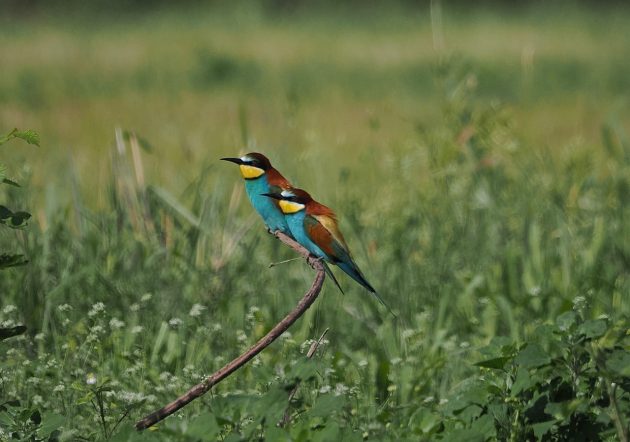
No visit to Kerkini would be complete without a boat trip on the lake with Nikos. A number of boatmen offer boat trips, but Nikos is the best, as he really knows where to find the birds. Sadly, the flooded forest that until a few years ago held hundreds of pairs of nesting herons and spoonbills, plus thousands of cormorants, is now much diminished, and many of these birds have moved to nesting areas away from the lake. However, Nikos will still take you close to a rich variety of nesting birds. They take little notice of boats gliding past them.
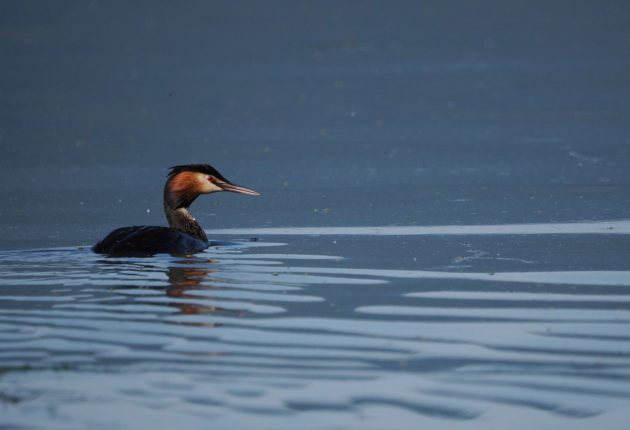
Great Crested Grebes are abundant on Lake Kerkini
Kerkini is famous for its pelicans, and a boat trip gives a fine opportunity to see both species – Dalmatian and Great White – at close quarters. In breeding plumage Dalmatian Pelicans sport wonderfully coloured pouches, but by May (when most have well grown young) the pouches have faded back to their rather dull non-breeding colours. Despite the ravages of bird flu a few years ago, which badly affected the Dalmatians, both species are doing well at Kerkini.
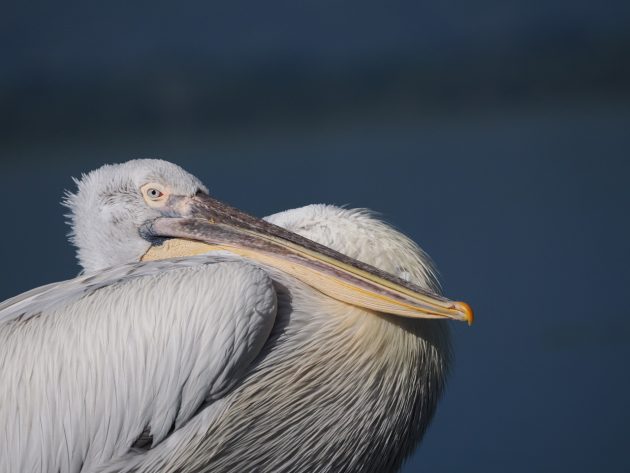
Dalmatian Pelican – the orange pouch has already faded in May
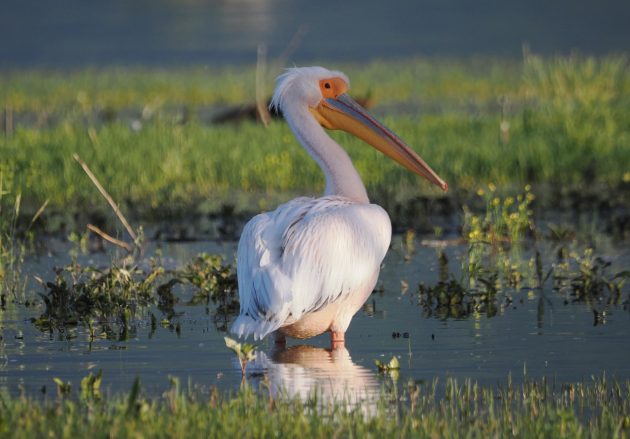
Great White Pelican
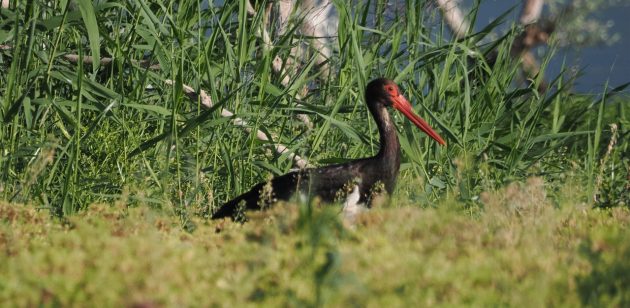
A Black Stork from the boat (above and below)
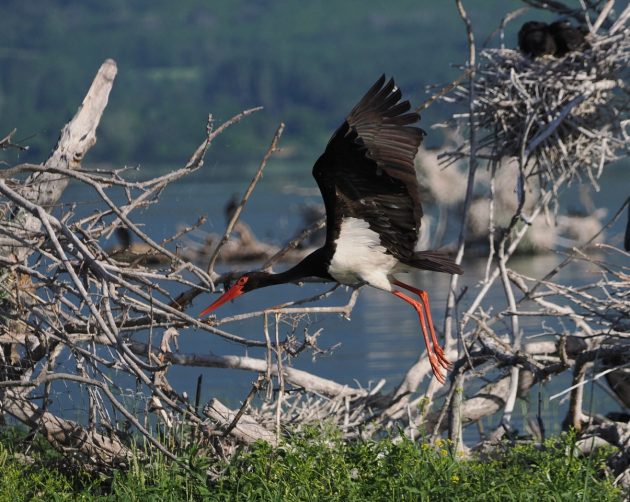
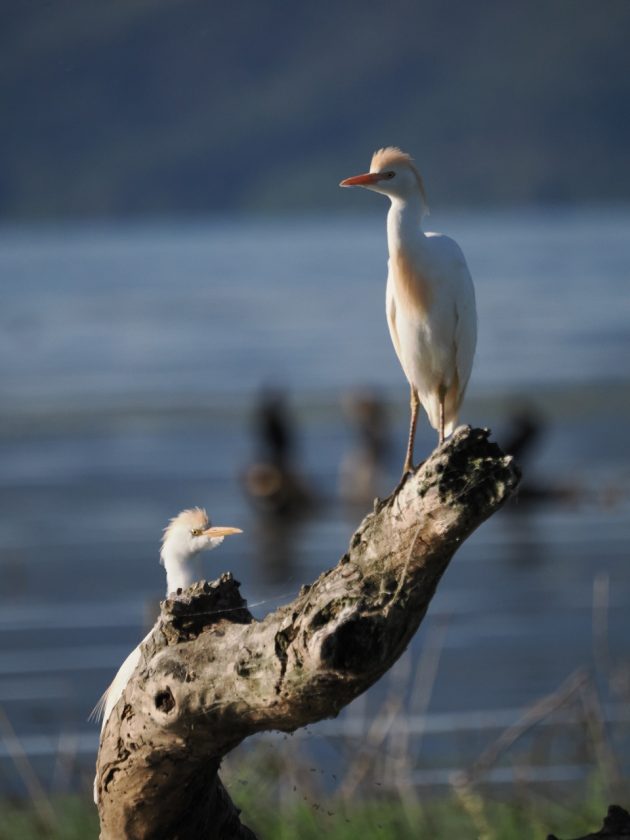
Cattle Egrets are scarce breeding birds at Kerkini – these were the only two that we saw
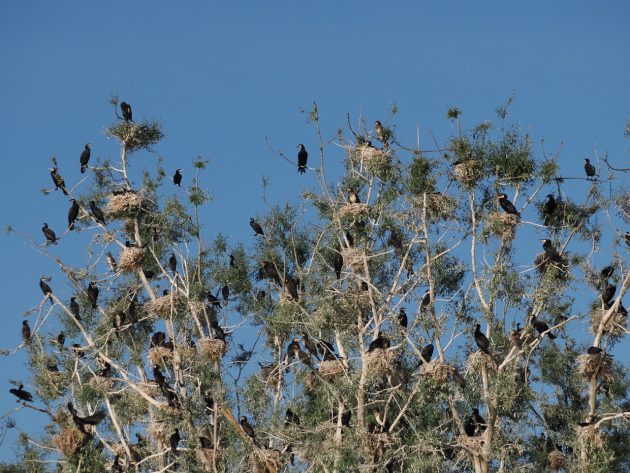
Cormorants nesting on one of the few surviving trees in the drowned forest
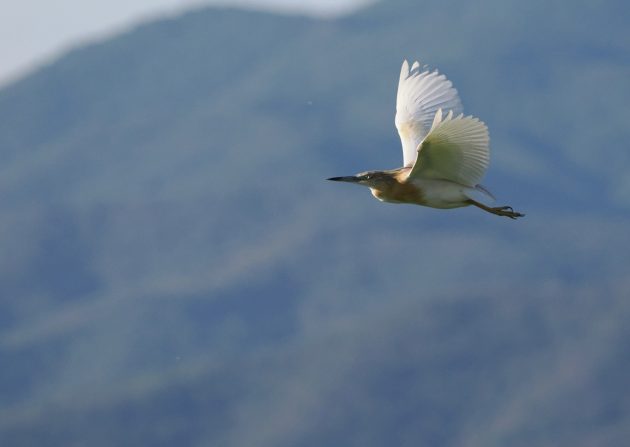
Squacco Heron – a common breeding bird at Kerkini
are always a few bonus birds to be seen on a boat trip with Nikos. This time we saw Whiskered Terns and a Couple of Blacks, but it was a fine Black Stork, seen at close quarters, that we enjoyed the most (above). White Storks are very common around the lake, Black Storks much less so, so it’s always a treat to get close to one. Another bird that Nikos managed to find for us was Black-necked (Eared) Grebe. Unlike Great Crested Grebes, by far the most numerous of the grebes on Kerkini, these smaller grebes are much harder to find. The birds Nikos showed us were far out in the lake. Here the water was much rougher, and the boast rolled on the swell, making photography a challenge.
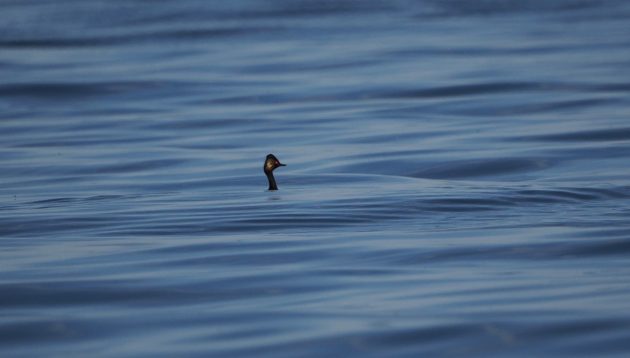
An elusive Black-necked Grebe
After five days exploring Kerkini, we drove south to the Axios Delta on the Gulf of Thessaloniki, and that will be the subject of my article next week.
(Lastly, a quick rant. Thessaloniki Airport doesn’t provide drinking water fountains, so if you want water, you have to buy a plastic bottle of the stuff. This apparently keeps the retailers of bottled water happy. Fortunately, most European airports now provide drinking water fountains.)


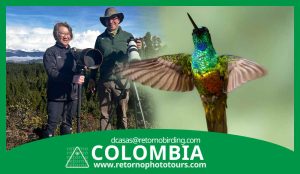
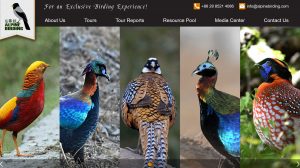
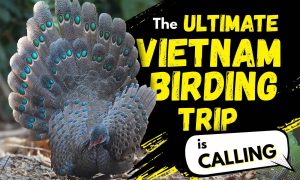
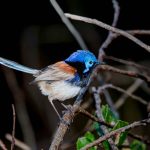
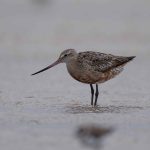
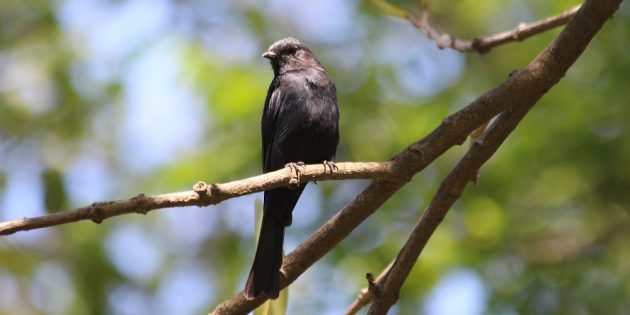

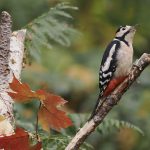
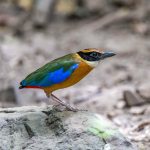
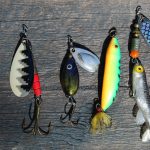
Apologies to readers for the poor proof reading – very irritating to see several typos in the published post.
No spur-winged lapwing? Do you think I’ll stand a chance for the owl at Cheimaros in June, or will it be too late? Also, have you ever visited the Lalias Ski Centre / any advice?
A suggestion, add the more commonly used #kerkini hashtag.
We found spur-winged plovers at Doirani Lake to the west of Kerkini, and also in the Axios Delta National Park. I have visited the Lalias Ski Centre many times, and finding birds there is always a challenge. However, this year we did find two pairs of rock partridges, a first for me at this site, as well as short-toed eagles, woodlarks, rock thrushes, northern wheatears, black-eared wheatear (just one) whinchats and stonechats. Finding birds here is a matter of luck, and allowing plenty of time to look. Even this doesn’t ensure success.
There must be a good chance of finding the eagle owls at Cheimaros in June, as the young take 50 to 60 days to fledge, and were probably no more than 10 days old when we saw them. This year the nest was on the cliff face on the left-hand side of the quarry as you drive in (not on the terraces where they nested last year).
Thanks. The last time I tried Mt. Pangeo, I drove all the way up along the less than good tarmac, and when I was ready to pass the upper tree-line, there were some loggers blocking the road with their tractors and not showing any will to move aside… Quite likely illegal loggers, because local villagers can obtain a logging permit allowing them to remove dead trees from the forest, which they commonly use as a cover to remove whatever they like. Hence, I had to turn back, unsuccessful. At Lalias, I hope for the Eastern Bonelli’s Warbler, and the Rock Partridge would be nice. Considering local roads, many bends and low speed, is it reachable from Chrysochorafa in two hours’ drive?
I have only once been up Mt Pangeo – I recall a very bad tarmac road. At the top we failed to find any of the special birds like accentors or shore larks, though Ortolan buntings were common and we heard but failed to see rock partridges. The road up to Lailias is fast, while traffic is minimal. We saw no othercars on the day of our visit.
Sounds great, thanks.
Dipped the Eagle Owl.
Yet, found two Lanners at Lailias! It’s been a while since I saw one…